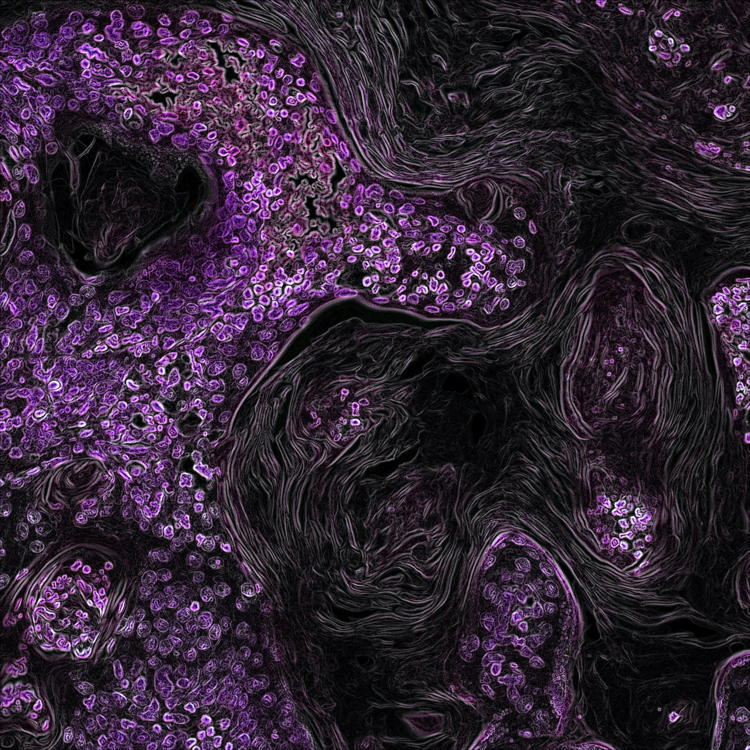Expression level of quiescin sulfhydryl oxidase 1 (QSOX1) in neuroblastomas

Submitted: 3 July 2013
Accepted: 23 January 2014
Published: 6 March 2014
Accepted: 23 January 2014
Abstract Views: 2582
PDF: 1108
HTML: 354
HTML: 354
Publisher's note
All claims expressed in this article are solely those of the authors and do not necessarily represent those of their affiliated organizations, or those of the publisher, the editors and the reviewers. Any product that may be evaluated in this article or claim that may be made by its manufacturer is not guaranteed or endorsed by the publisher.
All claims expressed in this article are solely those of the authors and do not necessarily represent those of their affiliated organizations, or those of the publisher, the editors and the reviewers. Any product that may be evaluated in this article or claim that may be made by its manufacturer is not guaranteed or endorsed by the publisher.
Similar Articles
- Dajie Wang, Zhaofeng Zhou, Liang Yuan, Polydatin reverses oxidation low lipoprotein (oxLDL)-induced apoptosis of human umbilical vein endothelial cells via regulating the miR-26a-5p/BID axis , European Journal of Histochemistry: Vol. 66 No. 4 (2022)
- M.L. Escobar Sánchez, O.M. EcheverrÃa MartÃnez, G.H. Vázquez-Nin, Immunohistochemical and ultrastructural visualization of different routes of oocyte elimination in adult rats , European Journal of Histochemistry: Vol. 56 No. 2 (2012)
- Xilin Ge, Caoxin Huang, Wenting Chen, Chen Yang, Wenfang Huang, Jia Li, Shuyu Yang, Effect of Danggui Buxue decoction on hypoxia-induced injury of retinal Müller cells in vitro , European Journal of Histochemistry: Vol. 68 No. 4 (2024)
- J.M. Ou, Z.Y. Yu, M.K. Qiu, Y.X. Dai, Q. Dong, J. Shen, X.F. Wang, Y.B. Liu, Z.W. Quan, Z.W. Fei, Knockdown of VEGFR2 inhibits proliferation and induces apoptosis in hemangioma-derived endothelial cells , European Journal of Histochemistry: Vol. 58 No. 1 (2014)
- Xin Huang, Xuan Xu, Huajing Ke, Xiaolin Pan, Jiaoyu Ai, Ruyi Xie, Guilian Lan, Yang Hu, Yao Wu, microRNA-16-5p suppresses cell proliferation and angiogenesis in colorectal cancer by negatively regulating forkhead box K1 to block the PI3K/Akt/mTOR pathway , European Journal of Histochemistry: Vol. 66 No. 2 (2022)
- Y. Dong, C. Yang, Z. Wang, Z. Qin, J. Cao, Y. Chen, The injury of serotonin on intestinal epithelium cell renewal of weaned diarrhoea mice , European Journal of Histochemistry: Vol. 60 No. 4 (2016)
- Yan Wang, Jie Sun, Ninghua Yao, Correlation of the AKT/mTOR signaling pathway with the clinicopathological features and prognosis of nasopharyngeal carcinoma , European Journal of Histochemistry: Vol. 65 No. 4 (2021)
- Arianna Casini, Giorgio Vivacqua, Rosa Vaccaro, Anastasia Renzi, Stefano Leone, Luigi Pannarale, Antonio Franchitto, Paolo Onori, Romina Mancinelli, Eugenio Gaudio, Expression and role of cocaine-amphetamine regulated transcript (CART) in the proliferation of biliary epithelium , European Journal of Histochemistry: Vol. 67 No. 4 (2023)
- Guoyue Liu, Cunzhi Yin, Mingjiang Qian, Xuan Xiao, Hang Wu, Fujian Fu, LncRNA gadd7 promotes mitochondrial membrane potential decrease and apoptosis of alveolar type II epithelial cells by positively regulating MFN1 in an in vitro model of hyperoxia-induced acute lung injury , European Journal of Histochemistry: Vol. 67 No. 2 (2023)
- Chaojie He, Yi Yu, Feifan Wang, Wudi Li, Hui Ni, Meixiang Xiang, Pretreatment with interleukin-15 attenuates inflammation and apoptosis by inhibiting NF-κB signaling in sepsis-induced myocardial dysfunction , European Journal of Histochemistry: Vol. 68 No. 2 (2024)
You may also start an advanced similarity search for this article.
Publication Facts
Metric
This article
Other articles
Peer reviewers
3
2.4
Reviewer profiles N/A
Author statements
Author statements
This article
Other articles
Data availability
N/A
16%
External funding
N/A
32%
Competing interests
N/A
11%
Metric
This journal
Other journals
Articles accepted
57%
33%
Days to publication
245
145
- Academic society
- N/A
- Publisher
- PAGEPress Publications, Pavia, Italy

 https://doi.org/10.4081/ejh.2014.2228
https://doi.org/10.4081/ejh.2014.2228











